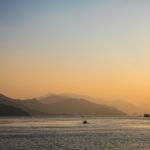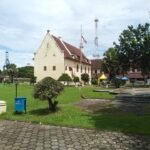Wondering when to go to Yogyakarta without running into huge crowds or bad weather? Planning a trip to this vibrant city in Indonesia can be thrilling, but it's important to pick the right moment. Whether you're hunting for the best local cuisine, outdoor adventures, or cultural experiences, your ideal time to visit Yogyakarta often hinges on a few factors, such as the weather, budget, and local events.
In this article, we'll dive into Yogyakarta's climate and offer you month-by-month insights so you can choose the best time to embark on your Indonesian adventure. So, let's get started!
Overview of Yogyakarta’s Climate
Located in the heart of Java, Yogyakarta boasts a tropical climate, with two main seasons: the dry season and the wet season. The dry season typically runs from April to October, while the wet season is from November to March.
Weather in Yogyakarta tends to be warm year-round, with average temperatures usually hovering between 24°C (75°F) and 32°C (90°F). It's a good idea to prepare for occasional downpours during the wet season, which can create both beautiful scenery and some travel hiccups.
Understanding the seasons in Yogyakarta can help you plan your wardrobe and activities accordingly, ensuring a comfortable experience whether you're hiking up Merapi or exploring the city's cultural marvels.
Month-by-Month Breakdown
January – March (Rainy Season)
Weather: Expect increased humidity and frequent showers. January, in particular, sees the most rain.
Events: Cultural festivals and the end of the school holidays are in full swing.
Pros and Cons:
- Pros: Hotels are cheaper, and tourist spots are less crowded.
- Cons: Rain can disrupt outdoor plans.
Best For: Budget travelers who don't mind some drizzle and want to soak in more personal experiences.
April – June (Transition to Dry Season)
Weather: The rain tapers off in April, with pleasant temperatures and humidity gradually decreasing.
Events: The annual Yogyakarta Arts Festival often kicks off in June.
Pros and Cons:
- Pros: Ideal time for outdoor exploration and photography, as the weather is typically nice.
- Cons: Rooms may start to fill up, especially closer to the arts festival.
Best For: Outdoor enthusiasts and culture seekers.
July – September (Peak Dry Season)
Weather: These months are usually the hottest and driest, with average highs peaking around 32°C (90°F).
Events: Various traditional festivals, including the famous Sekaten festival celebrating the birth of the Prophet Muhammad.
Pros and Cons:
- Pros: Perfect weather for outdoor activities, and you can expect beautiful sunsets.
- Cons: Tourist crowds peak, leading to higher hotel rates.
Best For: Travelers who thrive in bustling environments and want to take part in cultural festivities.
October – December (Transition to Rainy Season)
Weather: October marks the transition back to the rainy season, with occasional light showers. By December, expect more frequent rain.
Events: The holiday season and Christmas celebrations bring a festive vibe to the city.
Pros and Cons:
- Pros: Fewer tourists, making it a quieter time to explore.
- Cons: Rainy days could limit outdoor activities.
Best For: Travelers looking for a more laid-back experience and those interested in holiday festivities.
Tips Based on Travel Style
For Budget Travelers
The best time to travel to Yogyakarta on a budget is during the rainy season (January to March). Hotel prices drop, and you can often find great deals on flights. Just pack an umbrella!
For Avoiding Crowds
The months of October and November are relatively slow, offering a more tranquil experience—even if the weather is getting a bit unpredictable.
For Outdoor Activities and Cultural Events
If you're excited to hike or partake in eye-catching festivals, aim for April to June. The weather in Yogyakarta is perfect for outdoor enthusiasts, and you'll get to embrace the rich culture through events like the Yogyakarta Arts Festival.
For Romantic or Solo Trips
Visiting during the shoulder seasons (April or October) can offer a balance of fewer crowds and beautiful weather. Capture stunning sunsets at Parangtritis Beach, or explore the iconic monuments like Borobudur and Prambanan at your leisure.
It really depends on what kind of experience you're looking for. Some travelers love January because of the quiet vibe, while others aim for the festivals in July.
FAQs
Is January a good time to visit Yogyakarta?
Yes, it can be a good time if you're looking for budget-friendly options, but be prepared for rain.
When is the rainy season in Yogyakarta?
The rainy season typically spans from November to March, with January seeing the heaviest rainfall.
What's the cheapest time to visit Yogyakarta?
Generally, the months of January through March offer the best deals on accommodations and flights.
What's the peak season in Yogyakarta?
The peak season runs from July to September, coinciding with the dry weather and many local festivals.
In summary, whether you want to enjoy breathtaking landscapes, partake in cultural events, or simply relax and rejuvenate, Yogyakarta has something for everyone year-round. So, pack your bags and get ready for an unforgettable journey!








